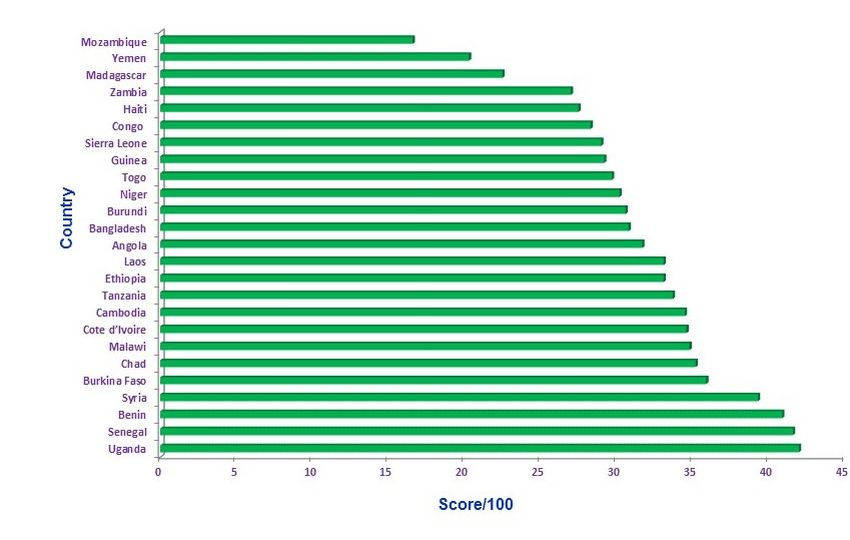Food Quality and Safety in the Global Food Security Index

The Global Food Security Index (GFSI) is an annual report provided by the Economist Intelligence Unit and sponsored by Corteva Agriscience, the Agriculture Division of DowDuPont. The GFSI’s report provides a comprehensive assessment of the state of food security, including the food safety index, through a dynamic quantitative and qualitative benchmarking model, using data from reliable international organizations including the World Health Organization, the Food and Agriculture Organization, the United Nations Development Programme, the World Trade Organization, Organization for Economic Cooperation and Development, the World Resources Institute, the World Bank, etc. The GFSI addresses the issues of affordability, availability and quality and safety in 113 developed and developing countries. Moreover, in 2017 the GFSI started to include an adjustment factor on natural resources and resilience. The following are the main factors/indicators used to develop GFSI:
- Affordability: It has six main indicators including food consumption as a share of household expenditure, proportion of population under the global poverty line, gross domestic product per capita, agricultural import tariffs, presence of food safety-net programs and access to financing for farmers.
- Availability: It has eight main indicators including sufficiency of supply, public expenditure on agricultural R&D, agricultural infrastructure, volatility of agricultural production, political stability risk, corruption, urban absorption capacity and food loss.
- Quality & Safety: It has five main indicators including diet diversification, nutritional standards (with three sub-indicators including national dietary guidelines, national nutrition plan or strategy, and nutrition monitoring and surveillance), micronutrient availability (with three sub-indicators including dietary availability of vitamin A, dietary availability of animal iron and dietary availability of vegetal iron), protein quality, food safety (with three sub-indicators including agency to ensure the safety and health of food, percentage of population with access to potable water and presence of formal grocery sector).
- Natural Resources & Resilience: It has seven main indicators including exposure, water, land, oceans, sensitivity, adaptive capacity and demographic stresses.
In 2018, the overall food quality and safety scores have declined in almost all countries compared with scores in 2017. The 25 highest food quality and safety index countries (shown below) are Portugal, France, Finland, Australia, United States, Netherlands, Ireland, Norway, Sweden, Greece, Spain, Canada, South Korea, Denmark, Italy, Belgium, Austria, United Kingdom, Israel, Japan, New Zealand, Switzerland, Germany, Singapore and Russia.

And the 25 lowest food quality and safety index countries (shown below) are Mozambique, Yemen, Madagascar, Zambia, Haiti, Congo, Sierra Leone, Guinea, Togo, Niger, Burundi, Bangladesh, Laos Angola, Ethiopia, Tanzania, Cambodia, Cote d’Ivoire, Malawi, Chad, Burkina Faso, Syria, Benin, Senegal and Uganda.

The GFSI should be used as scientific evidence to convince policy-makers, especially in developing countries, to invest in food safety systems. This is also a guide to inform donors of the most needed developing countries for their investments.The international donor community should target more investments to promote food safety at domestic levels in developing countries instead of focusing on exports (international markets). It is time for a "globalized food safety system" and "one food safety system for all."
